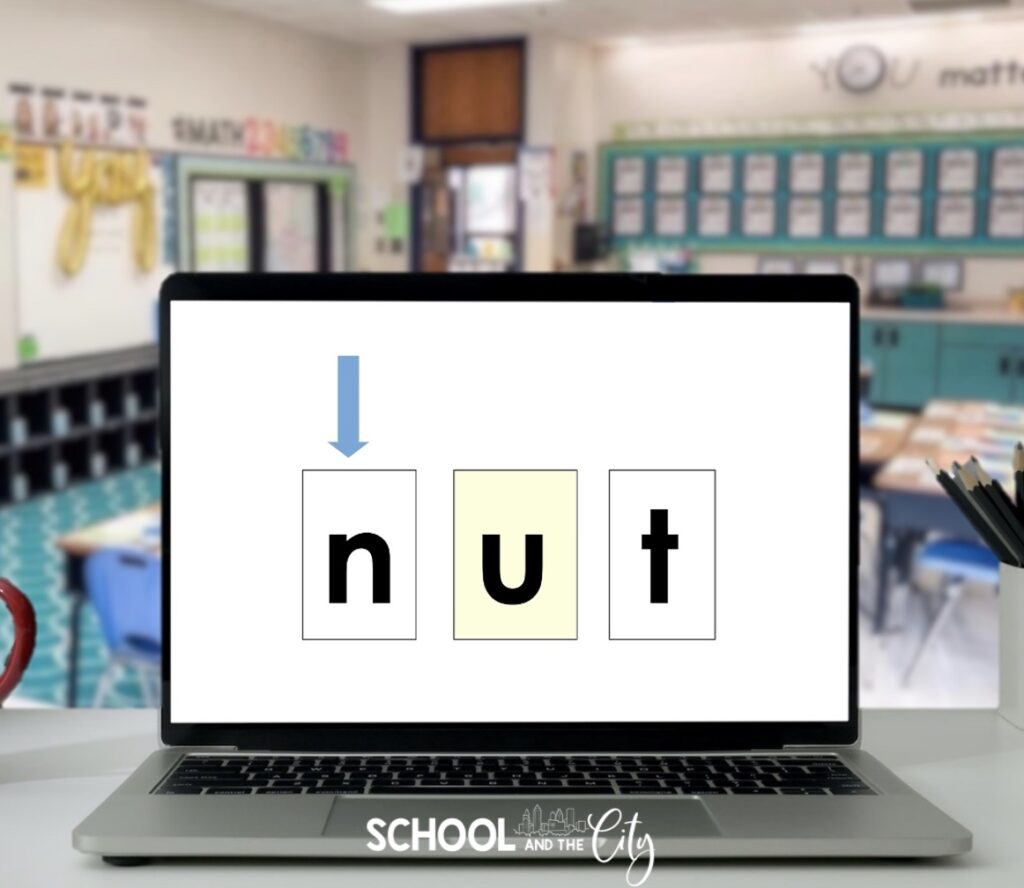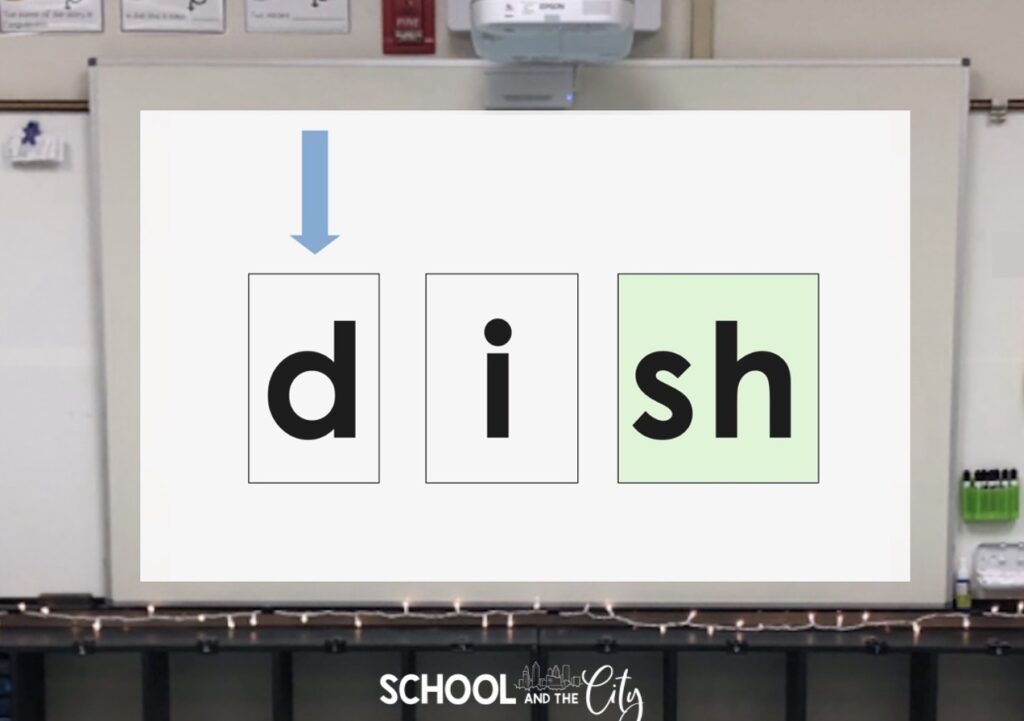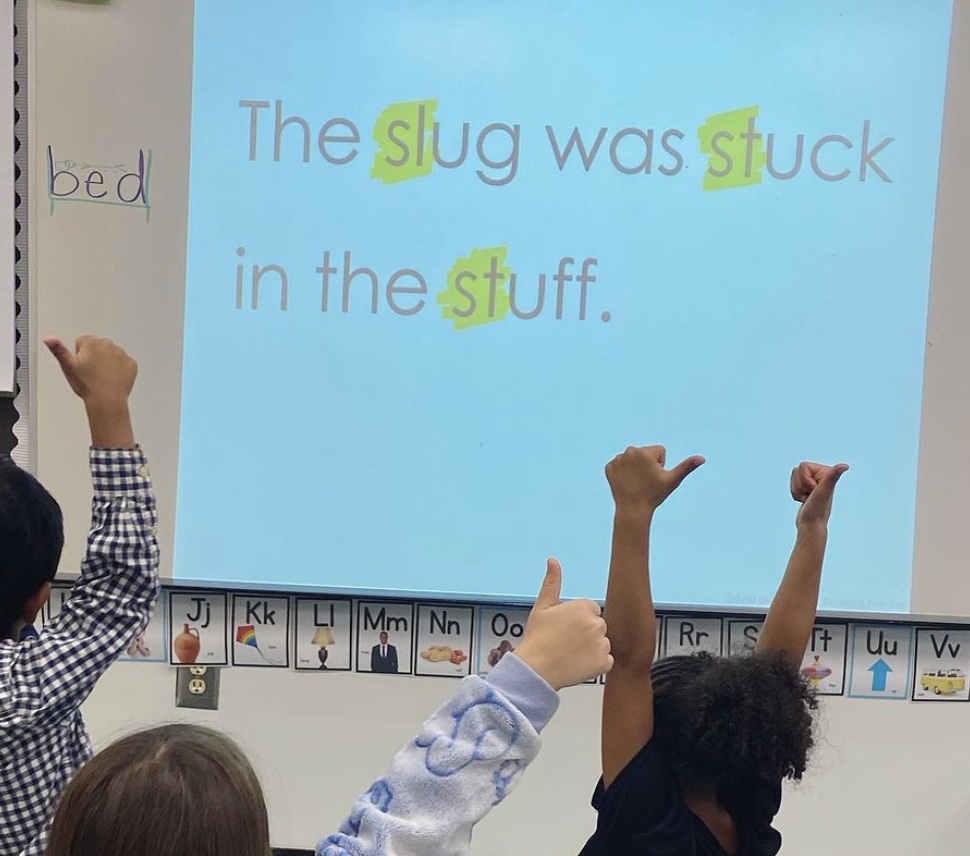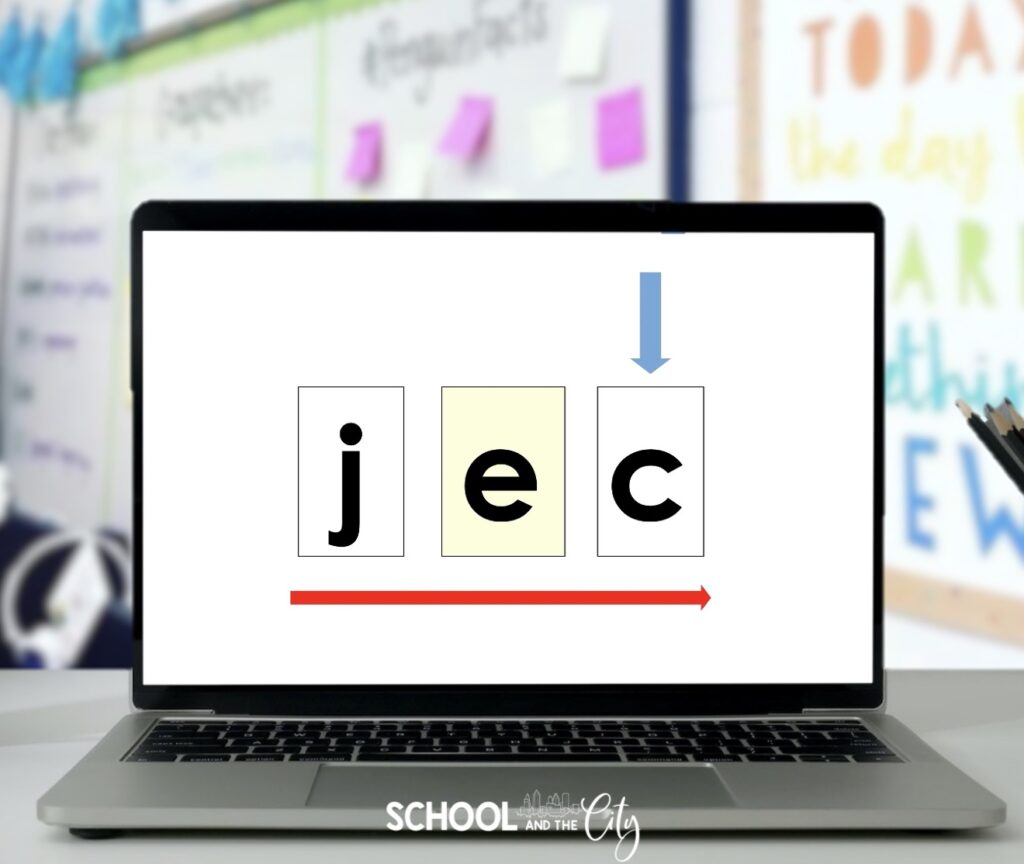Beginning readers need to be explicitly taught how to sound out and blend unknown words. This will require lots and lots of modeling of using the alphabetic code: matching graphemes and phonemes.
The goal of code-emphasis instruction is to help students automate sound-symbol associations to decode words accurately.

Through lots of practice and exposure, they will begin to recognize some whole words automatically. This means that a word has been stored in orthographic memory through the orthographic processing system. Until then, though, students need to be in the habit of looking at all of the letters in a word in order to sound it out accurately.
“There is no comprehension strategy powerful enough to compensate for the fact that you can’t read the words.” – Dr. Anita Archer
Classroom Application
One of the most common, simplest ways to explicitly teach and practice decoding with your students is to use a blending board. You may like a traditional blending board like this one from IMSE.
But if you’re like me, you might prefer something digital. (And something that requires NO prep, storage, or organization.) That’s why I created Decoding and Blending Board Slides.

Last year, I slowly built my presentation bank, week by week, as I planned and prepped to teach my reading intervention students how to decode new phonics patterns each week.
After many friends on Instagram asked, I’ve spent some time prepping them to share with you!
The slides are available individually by skill, or bundled by grade level (K-2nd):
- All Kindergarten Skills
- Kindergarten Bundle
- All 1st Grade Skills
- 1st Grade Bundle
- All 2nd Grade Skills
- 2nd Grade Bundle
- Big Bundle
Try one for free! CVC Nonsense Words
All of the 1st and 2nd grade skills have 4 or more decodable sentences at the end so students can practice applying new decoding skills in context.

When to Use Nonsense Words
Use nonsense words to teach and build decoding habits in students that may have learned lots of words through rote memorization.
Having students decode nonsense words is a great way to truly assess whether or not they have mastered and internalized a new phonics skill.

The More You Know…
How else might explicit decoding instruction benefit students?
Strong decoding (reading) goes hand in hand with strong encoding (writing). The more exposure students get decoding words with target phonics patterns and sounds, the stronger their orthographic memory will be for them to access when writing.
What is the science of reading?
The science of reading is more than just a buzzword – It’s science. And although it may seem like a trend, it’s not new. It’s 30+ years of research on how the human brain learns to read. It’s not what we’re teaching, but how we teach it.
Years of evidence shows that 95% of students are cognitively capable of learning how to read. In order to make this happen, we have to provide evidence-based, explicit, systematic literacy instruction.
Who am I?
Hi! I’m Kristin. I’m currently working full-time as a literacy coach and interventionist in a public elementary school. I have completed LETRS training for teachers and administrators, and I’m trained as a local LETRS facilitator. Thanks for being here! Other than this website, my favorite place to hang out is on Instagram @schoolandthecity.
You May Also Like…
- Try Word Chaining for Phonics Practice (includes a free download!)
- What is Orthographic Mapping? (includes a free download!)
- How to Gamify Phonics Fluency
- Phonemic Awareness Bulletin Board
- Favorite Phonics Supplies from Amazon